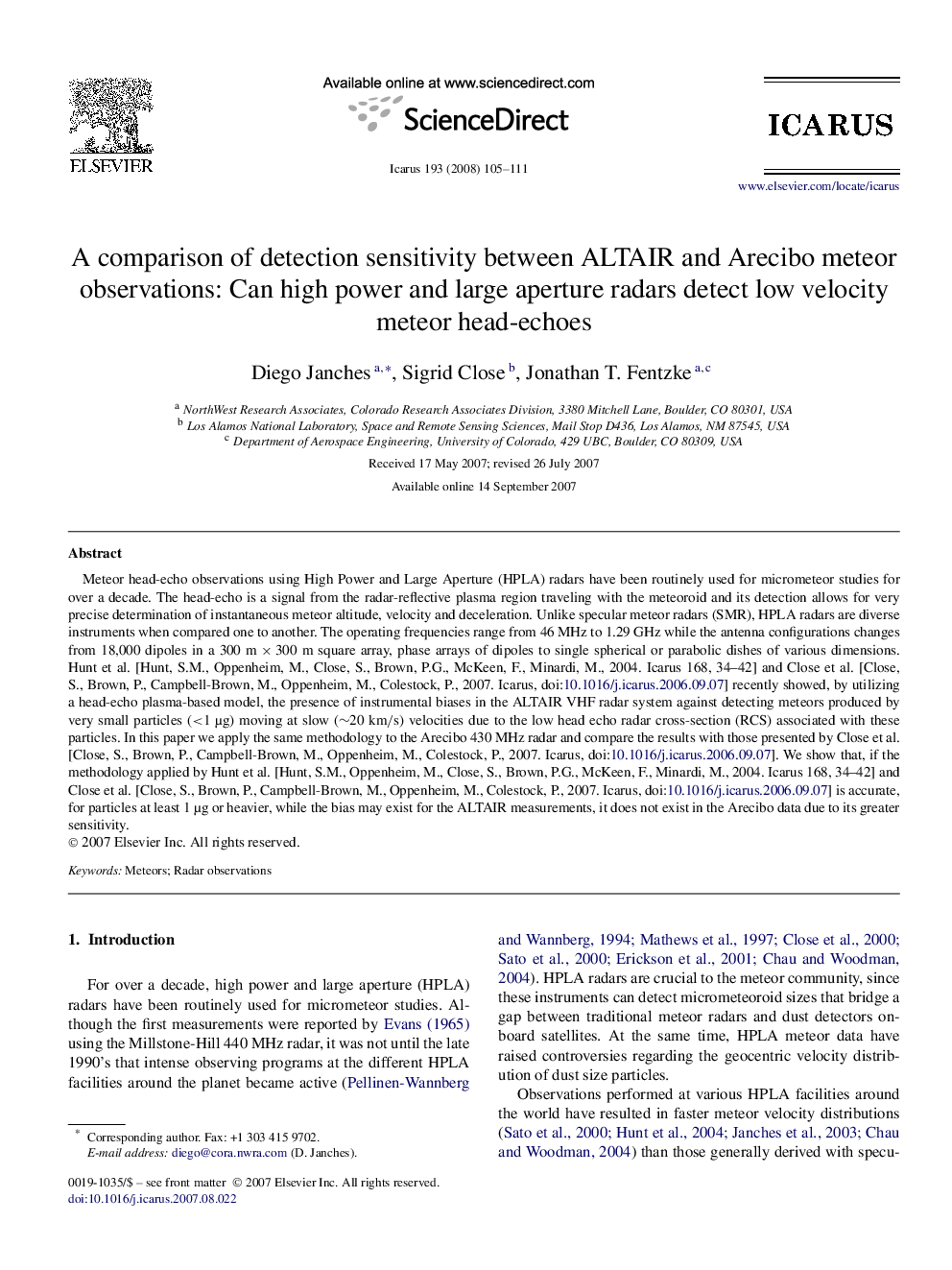| Article ID | Journal | Published Year | Pages | File Type |
|---|---|---|---|---|
| 1775395 | Icarus | 2008 | 7 Pages |
Meteor head-echo observations using High Power and Large Aperture (HPLA) radars have been routinely used for micrometeor studies for over a decade. The head-echo is a signal from the radar-reflective plasma region traveling with the meteoroid and its detection allows for very precise determination of instantaneous meteor altitude, velocity and deceleration. Unlike specular meteor radars (SMR), HPLA radars are diverse instruments when compared one to another. The operating frequencies range from 46 MHz to 1.29 GHz while the antenna configurations changes from 18,000 dipoles in a 300 m×300 m300 m×300 m square array, phase arrays of dipoles to single spherical or parabolic dishes of various dimensions. Hunt et al. [Hunt, S.M., Oppenheim, M., Close, S., Brown, P.G., McKeen, F., Minardi, M., 2004. Icarus 168, 34–42] and Close et al. [Close, S., Brown, P., Campbell-Brown, M., Oppenheim, M., Colestock, P., 2007. Icarus, doi:10.1016/j.icarus.2006.09.07] recently showed, by utilizing a head-echo plasma-based model, the presence of instrumental biases in the ALTAIR VHF radar system against detecting meteors produced by very small particles (<1 μg) moving at slow (∼20 km/s) velocities due to the low head echo radar cross-section (RCS) associated with these particles. In this paper we apply the same methodology to the Arecibo 430 MHz radar and compare the results with those presented by Close et al. [Close, S., Brown, P., Campbell-Brown, M., Oppenheim, M., Colestock, P., 2007. Icarus, doi:10.1016/j.icarus.2006.09.07]. We show that, if the methodology applied by Hunt et al. [Hunt, S.M., Oppenheim, M., Close, S., Brown, P.G., McKeen, F., Minardi, M., 2004. Icarus 168, 34–42] and Close et al. [Close, S., Brown, P., Campbell-Brown, M., Oppenheim, M., Colestock, P., 2007. Icarus, doi:10.1016/j.icarus.2006.09.07] is accurate, for particles at least 1 μg or heavier, while the bias may exist for the ALTAIR measurements, it does not exist in the Arecibo data due to its greater sensitivity.
